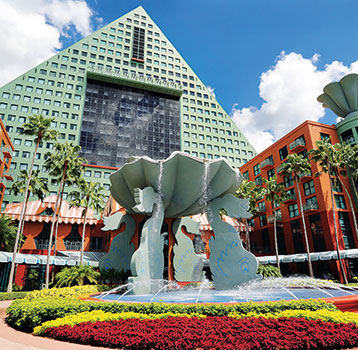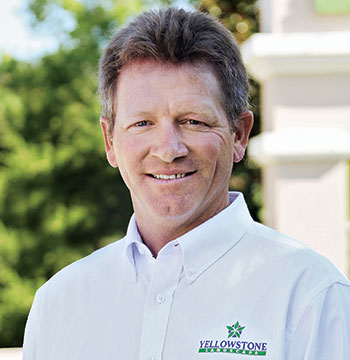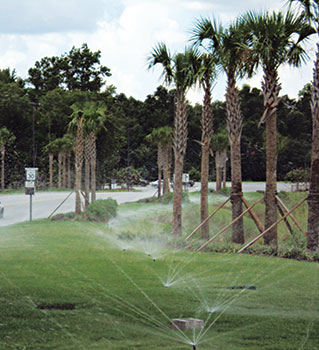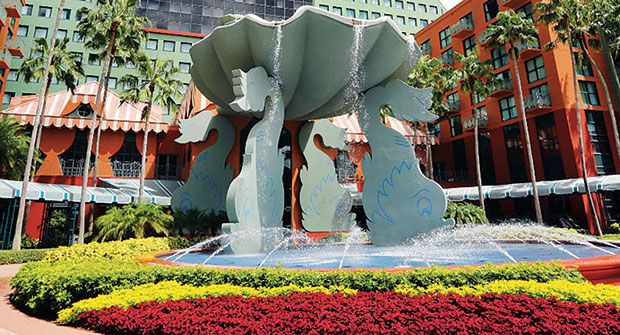
Yellowstone Landscape was formed in 2008 by the acquisition of Austin Outdoor in Florida, BIO Landscape in Houston and a smaller company in Atlanta. The formation of the company aligned with the height of the recession, and for several years, it didn’t grow.
“The mix of business was mostly installation versus maintenance, so that was a tough challenge,” says Tim Portland, CEO, who has been with Yellowstone since 2012. “There were the same struggles here as there were in most other landscape companies. The install business really took a beating, and the maintenance suffered compression as well.”
However, once the business realigned around key priorities, there was no stopping it.
This year, Yellowstone has landed one of the top spots on the LM150 list, coming in at No. 5 overall.
The company generated $230 million in revenue in 2018, which is a 32 percent leap over 2017. It is among the top 10 companies with the biggest growth from 2017 to 2018, coming in at No. 8 on the growth ranking.
“You’re either spiraling up or spiraling down, and we’ve been spiraling up,” Portland says. “It’s a lot of fun. We have that momentum and people are smiling and they’re enjoying it and it kind of feeds on itself.”
The company’s focus is on commercial maintenance with over 85 percent maintenance work. It only seeks installation work on commercial projects with a high probability of leading to maintenance or with customers it has a relationship with or wants to build a relationship with, Portland says.

The secret sauce
Portland credits the company’s growth to three things: people aligned with the company’s priorities, disciplined acquisitions and strong customer service.
The company has very strong organic growth, which Portland credits to the sales team. “We seriously invested in our sales team in a way that is aligned with the rest of the company,” he says. “They are without question the best sales group I’ve ever worked with.”
Yellowstone’s sales team focuses on the quality of an opportunity, rather than the size. All of the company’s rewards (i.e. compensation) are geared around this concept, even on the sales side, Portland notes. Most companies reward sales for getting ink on paper, regardless of the downstream consequences, but not Yellowstone.
In Yellowstone’s model, when a job performs well, the operations team and the salesperson win. This keeps salespeople engaged with operations and focused on clients who see value in what the company does, rather than ones who are only looking for the lowest price.
Branch operations teams have the ability to earn annual incentives, but the real benefit of correctly estimating a job goes beyond the financials, Portland says.
“When we price our services in a way that gives our operations team the amount of time they need to do a great job, everyone wins,” he says.
Acquisitions also have helped with growth. In 2018, Yellowstone acquired Somerset Landscape and Maintenance in Dallas-Fort Worth, Phoenix and Las Vegas, as well as Leaderscape in Palm Beach, Fla.

performance. (Photo: Yellowstone Landscape)
It’s important to approach growth through acquisitions thoughtfully and with discipline, Portland says, and to recognize when a potential acquisition is or isn’t a good fit.
“The businesses we’ve acquired have integrated really well,” Portland says. “That’s not an accident. We knew they would be a good fit, and we knew where we thought we would add value to those businesses, and it’s really important that the key operators on the receiving end agree that’s where we’ll be focused on improving.”
Customer retention is the third ingredient responsible for Yellowstone’s growth. According to Portland, the company does a terrific job working for the customers it has so it’s able to retain its base.
Patience is a virtue
How does Yellowstone manage landing big contracts and the customer retention that leads to growth?
“We have to demonstrate that we have the capability to perform and perform well,” Portland says. “You have to communicate that you will be the best value to the customer.”
It helps to have reference properties to show potential clients.
“Don’t ask us about us, ask them about us,” he says. “That’s the best way to demonstrate that they would be experiencing an improvement in the quality of their landscape and the quality of their experience with their landscaper.”
Yellowstone has no desire to be the lowest price in the marketplace because, according to Portland, you get what you pay for. This sometimes means being patient. The company may not win a job on the first try, but often customers come back several months later and sign a contract.
“It’s a hard message to communicate to be patient, be persistent, follow up, be disciplined, be there for them, but if you took the job at that price, we wouldn’t be set up for success,” Portland says. “Sometimes winning it 18 or 24 months later, it was painful for those 18 or 24 months, but then the customer knows what they’re getting and everyone’s happy.”
Some large contracts Yellowstone services include The Swan and Dolphin Resort near Orlando, an airline manufacturing facility in Charleston, S.C., and Harris County in Texas.
The company values each of these partnerships for different reasons.
The Swan and Dolphin requires a lot of communication, collaboration and flexibility around its schedule, but the result is a property that is consistently beautiful and shows off Yellowstone’s quality work.
The airline manufacturing facility is meticulous about safety, and Yellowstone has been able to experience that culture and bring a lot of it into its own business practices.
Yellowstone helped Harris County as it prepared for and recovered from Hurricane Harvey.
Before the storm, teams helped County and Flood Control District officials clear debris from flood channels and install inflatable dams along reservoirs. After the storm, the company removed debris and cleared roadways so emergency personnel could access parts of the city most impacted by flooding.
“We were out doing something you wouldn’t traditionally associate with a landscape company, but when you have a partnership with a big client like that, whatever we can do to help them in their time of need is worth it,” Portland says.
Read more:
To view the complete list, breakdowns and company profiles, check out a PDF version here.


